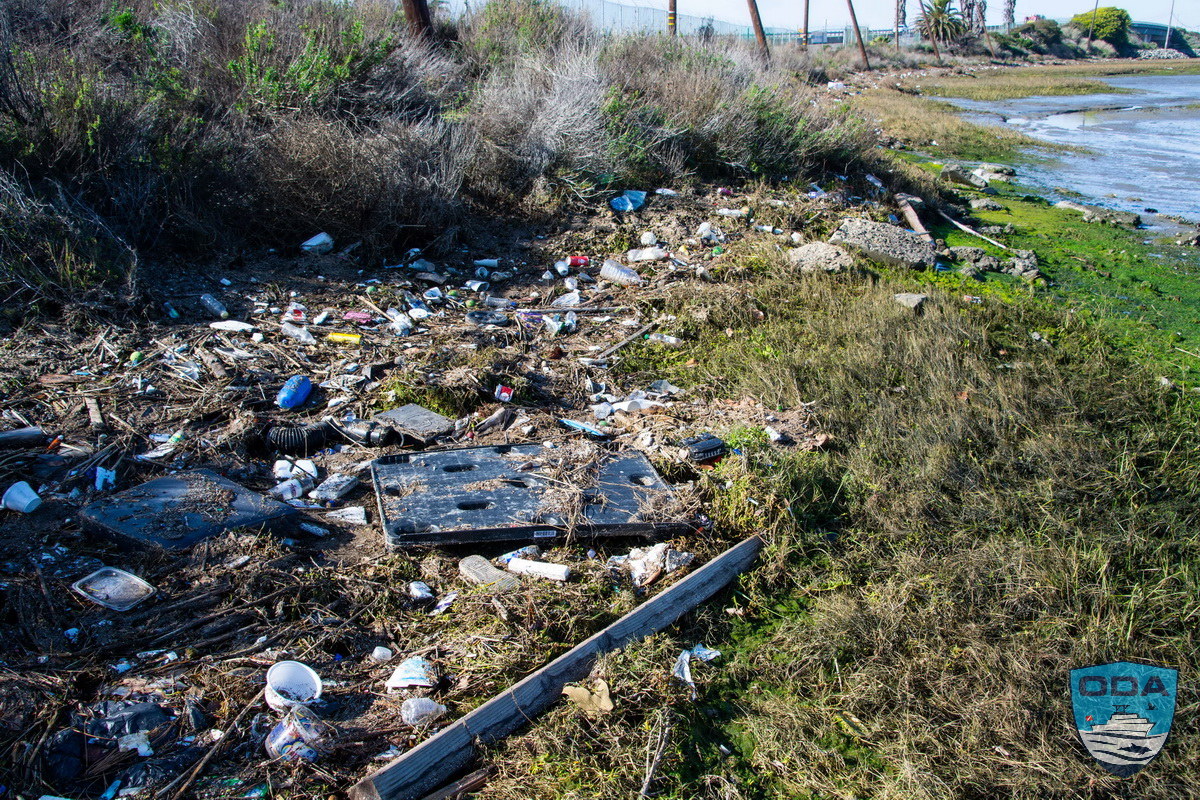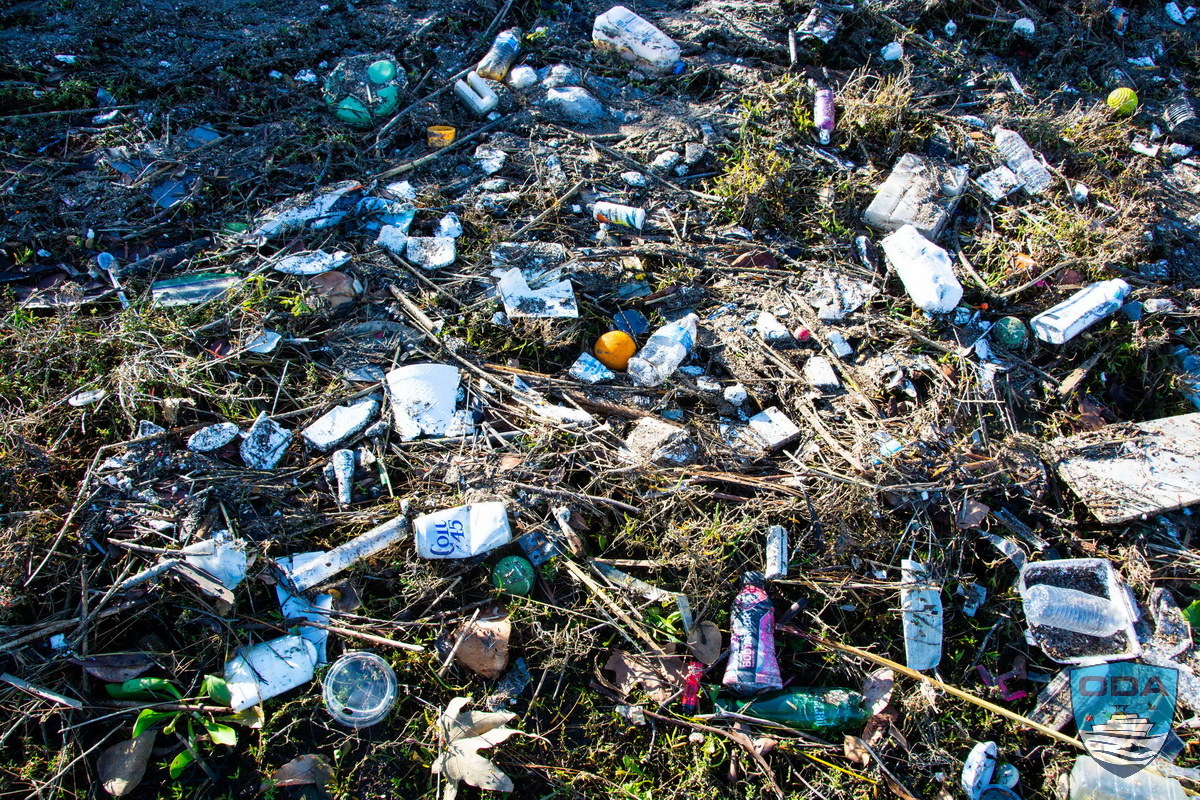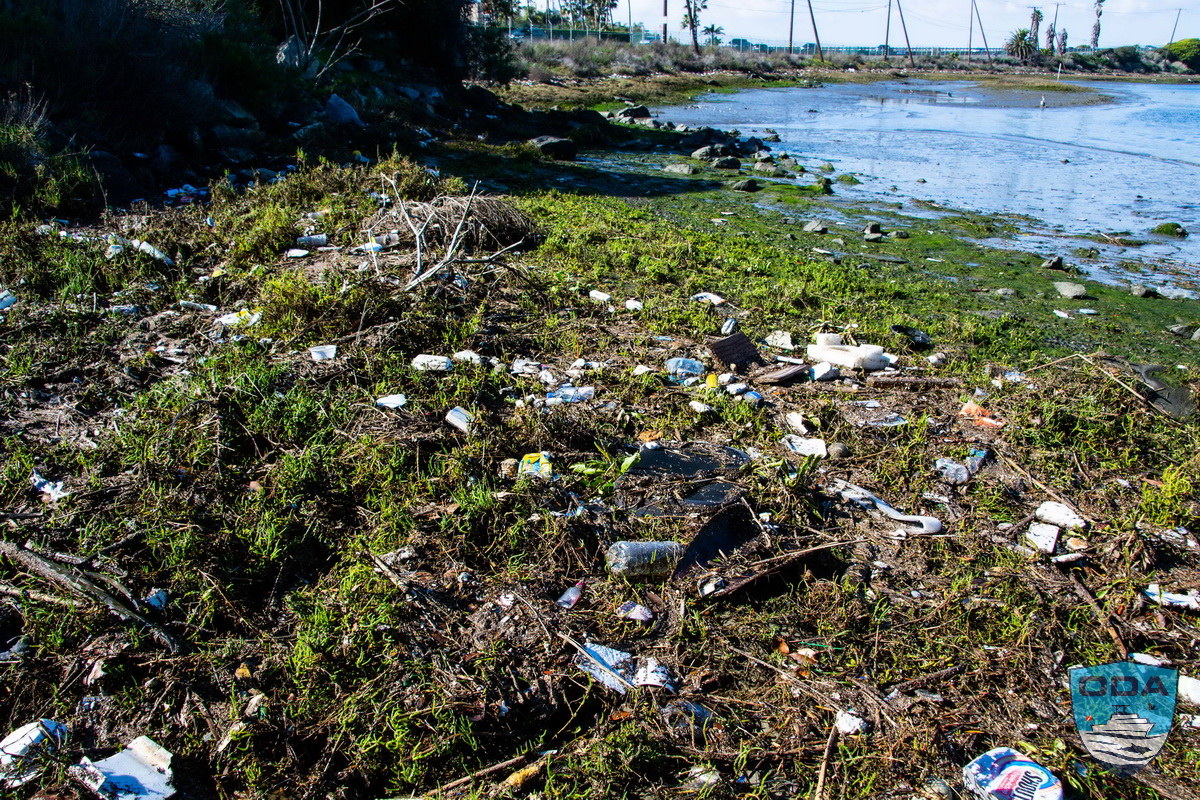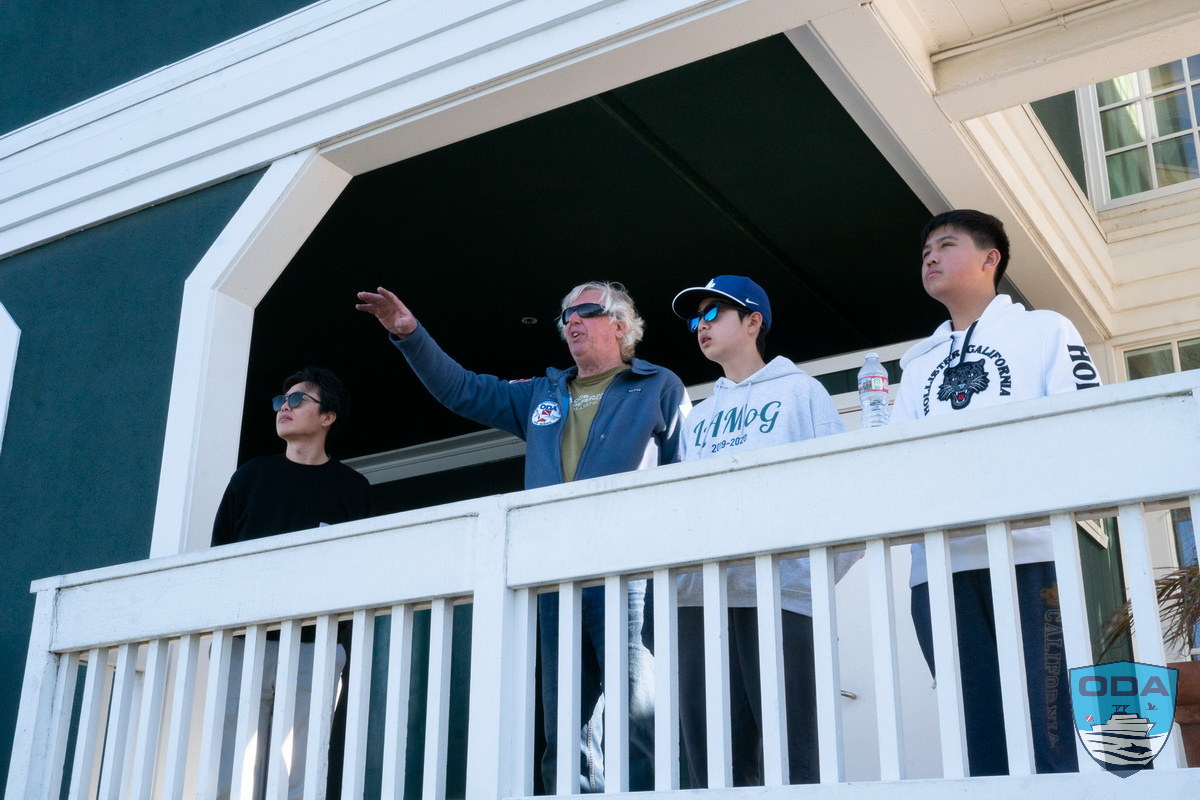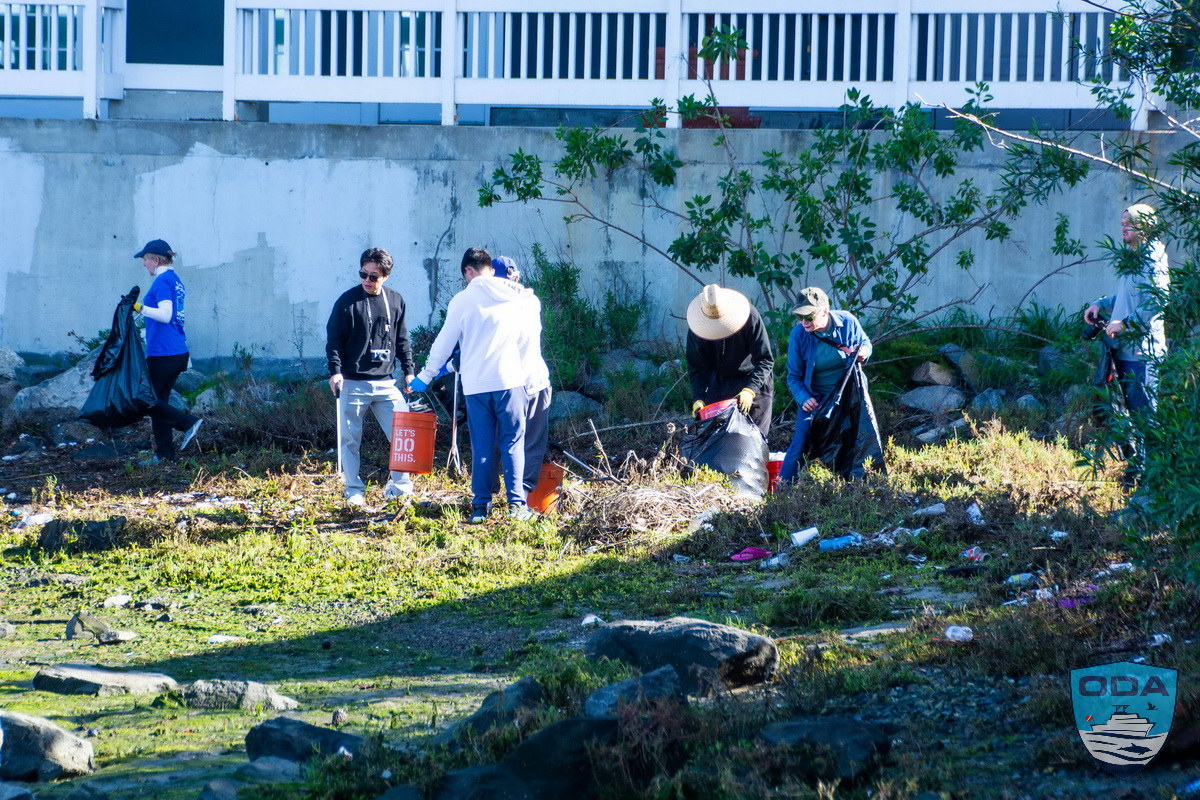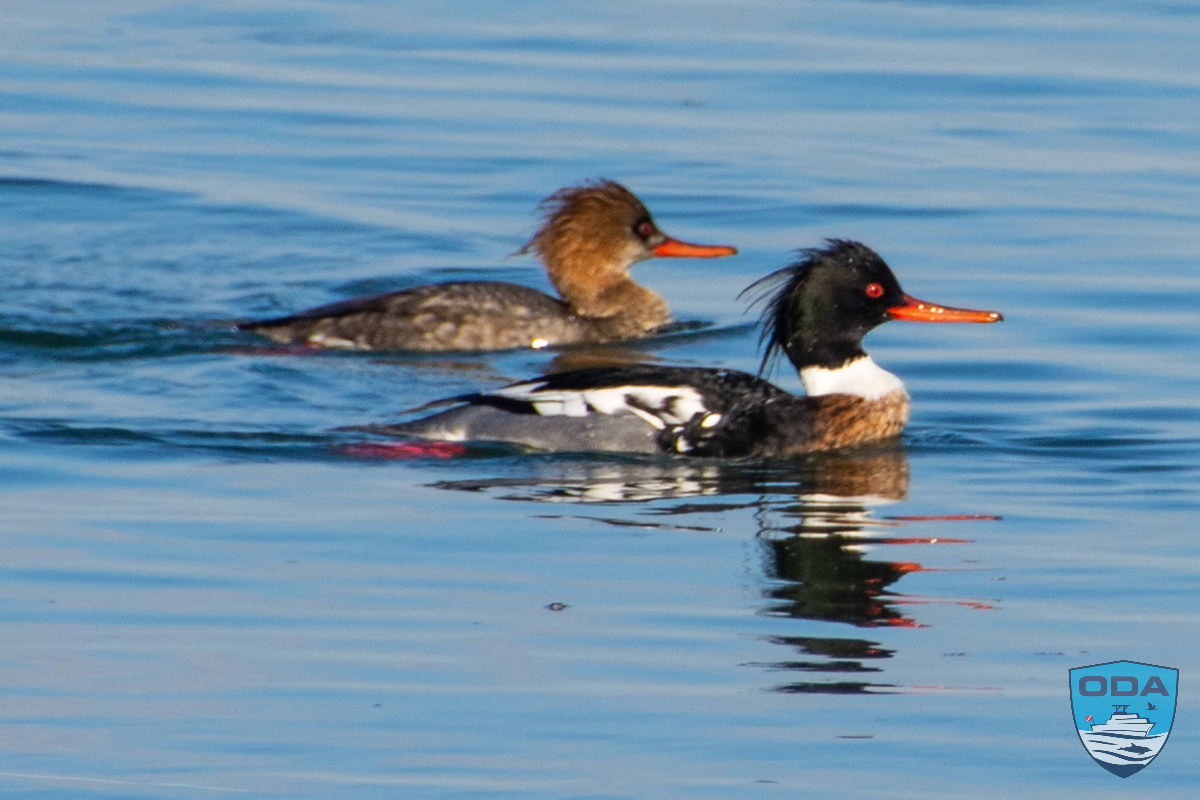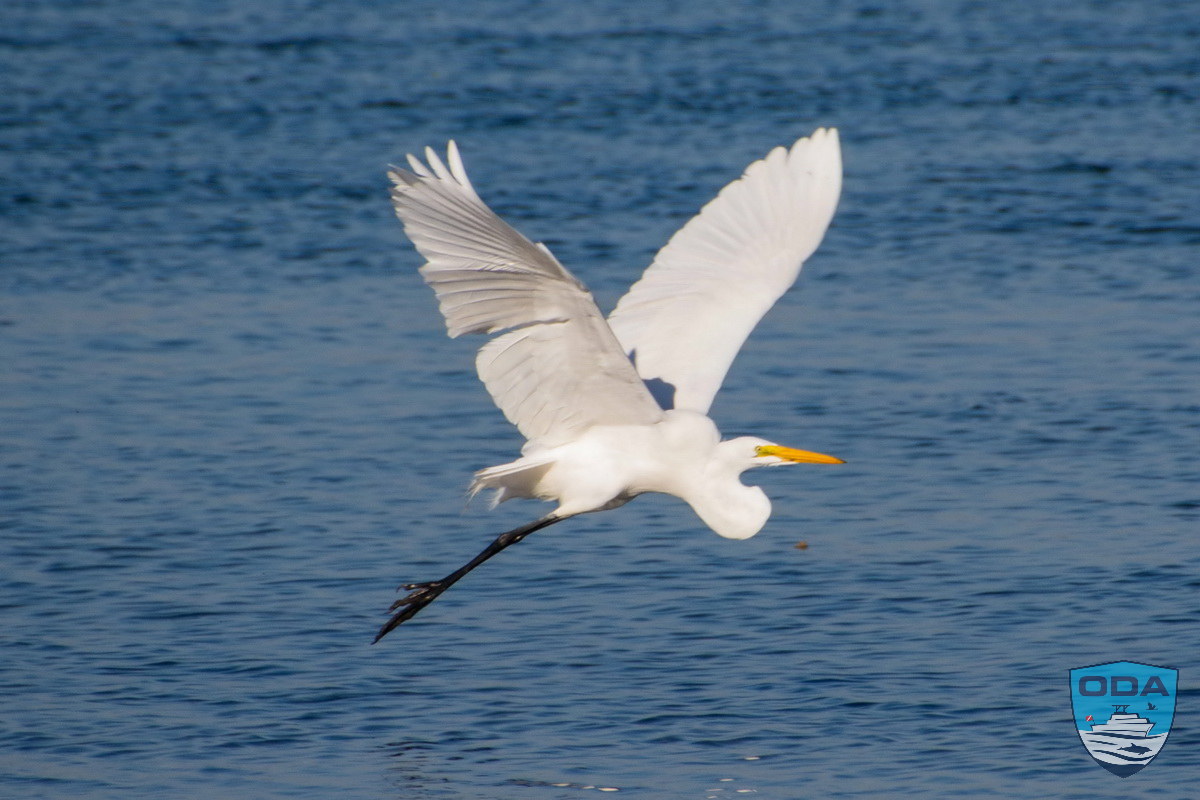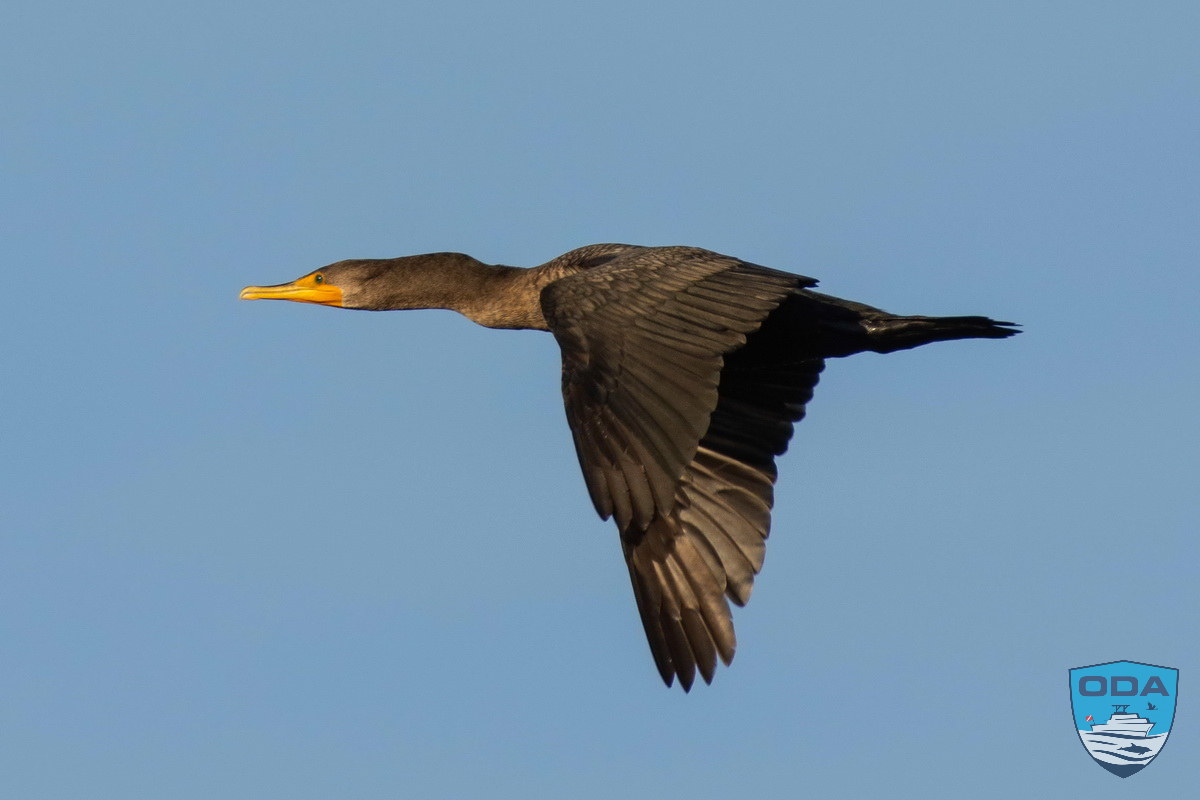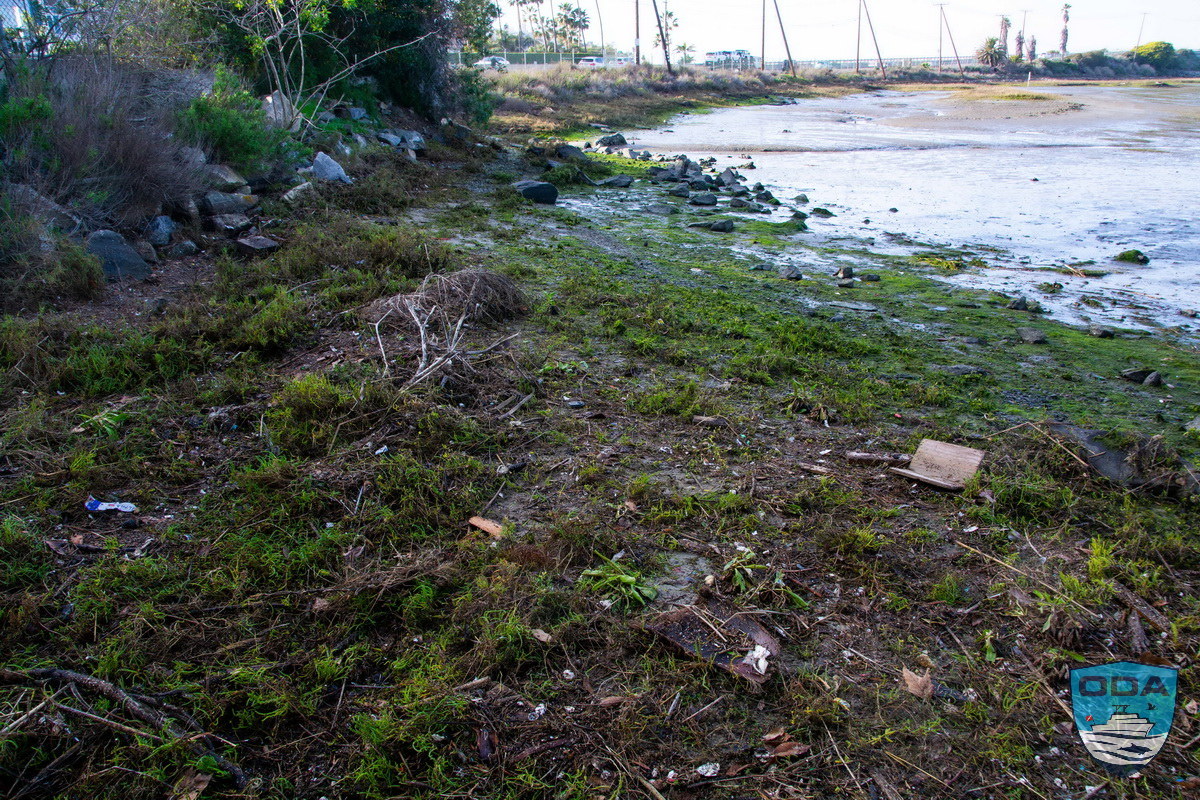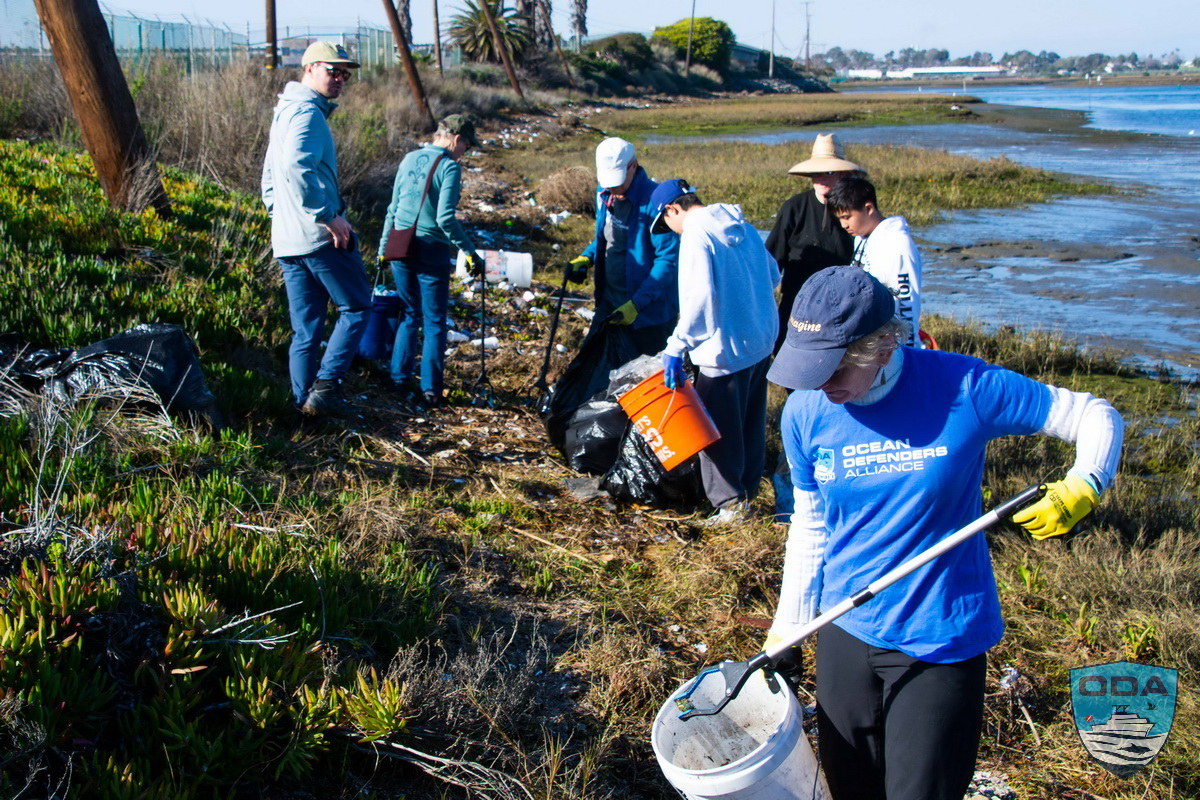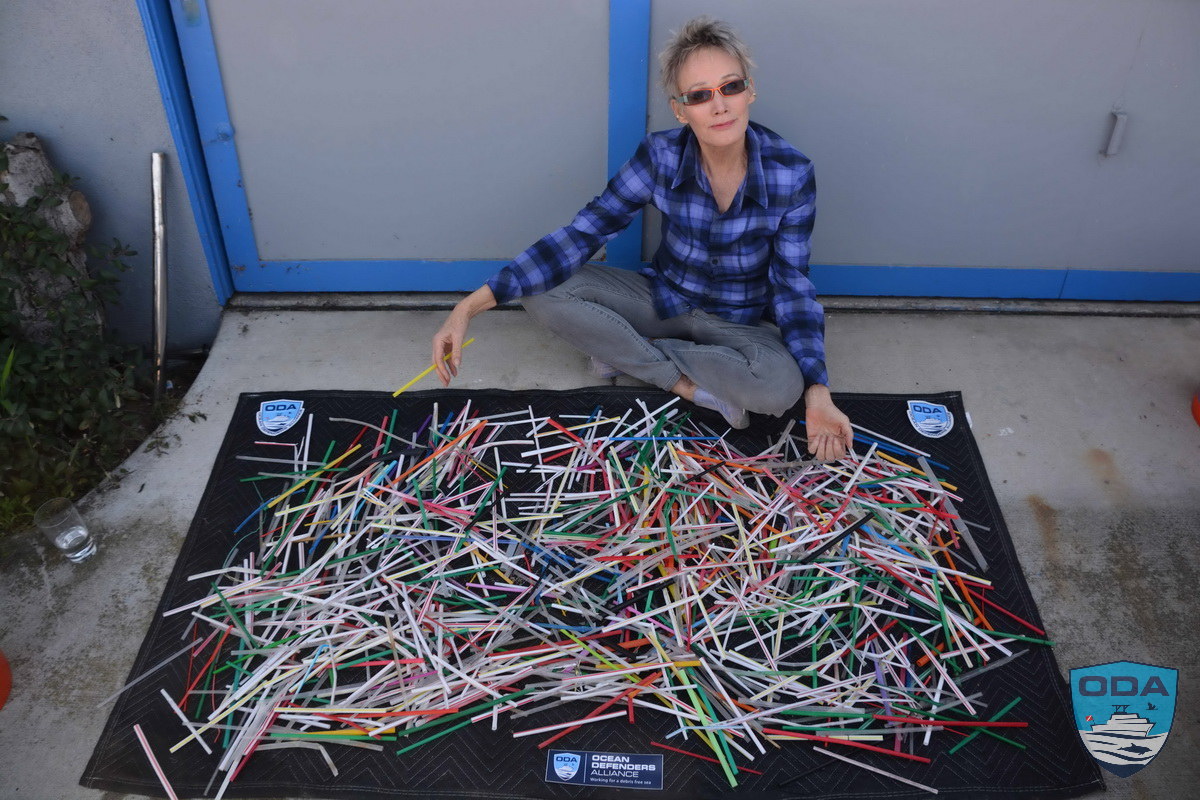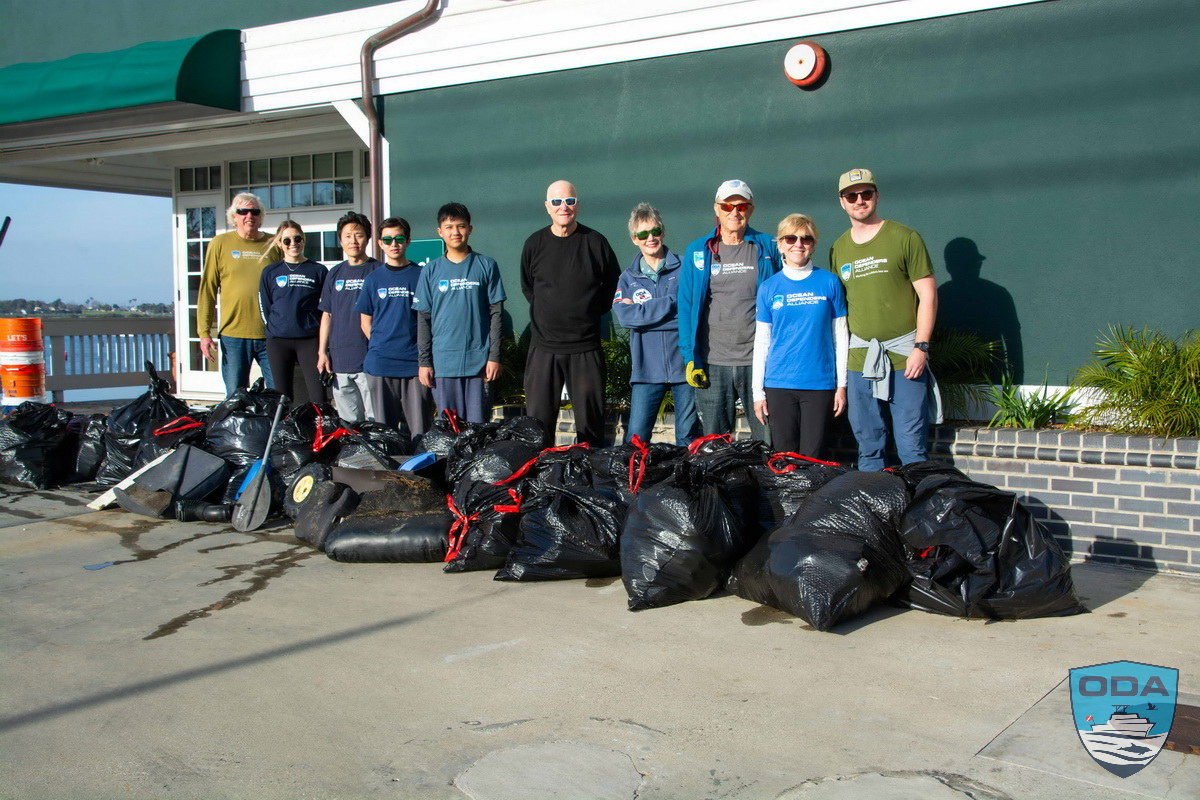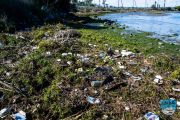By Founder and President Kurt Lieber
While California gets a respite from the rainstorms that have hammered the state for the last several weeks, a few Ocean Defenders Alliance (ODA) volunteers took advantage of some sunshine and headed to the beach. Huntington Beach to be specific.
There are several storm channels that funnel the excess rainwater from the inland areas of Orange County to the ocean. Cities like Anaheim, Stanton, Garden Grove, Westminster, and Huntington Beach are all tied into the channel systems.
As you well know, it’s not just water that gets flushed out to sea, it’s all the pollutants, oils, fertilizers, and plastics of all shapes and sizes that go along for the ride.
ODA has been keeping an eye out for locations along the coast where we can be most effective at removing the plastics and other debris before it makes it out to the sea. One place we scouted recently was a spot on the border between Huntington Beach and Seal Beach.
There is a small stretch of land, about 400 yards long, that seems to accumulate an inordinate amount of plastics. We’ve been cleaning up this site for years now, after heavy rain, and it never ceases to amaze me how much stuff this area “catches.”
The site runs right along Pacific Coast Highway, and where the land ends, the waters exit the harbor and transition to the ocean. Our job is to remove debris as much as we can before it gets to open water, never to be seen again until it joins that swirling mass of human detritus called the Pacific Garbage Patch. This is an area twice the size of Texas, where the currents of the Pacific rotate in a clockwise direction just like a whirlpool and filled with high concentrations of plastics.
The plastics move slowly around in a circle and get broken down into smaller and smaller pieces over time as they photodegrade by sunlight and by the power of the wind and waves. Even though the pieces are smaller, this is an even bigger problem because more types of wildlife can ingest the pieces thinking they are food.
Volunteers to the rescue!
I sent out an email to our divers and crewmembers asking if they could meet me at the site on Sunday, January 22nd. Then 10 of us met up at 1 o’clock, grabbed our buckets, trash grabbers, and trash bags.
Here's part of our "briefing" which entails looking out over the waterway, which was strewn with litter as far as our eyes could see. I think these young volunteers were a bit shocked at what lay ahead of us, but they were up for the job!
For the next 3 hours we did what we could to make the place a little more habitable for wildlife.
We started out near the wall and then started moving along the waterway.
Bird Watchers Paradise
Just on the other side of the channel, about 200 yards away, lies the Seal Beach National Wildlife Refuge (SBNWR). This wetland is a protected area for the fish and birds that call it home. While we were there, we saw quite a variety of birds, some are here year-round, while others are migrating through the area.
Some that we saw were even rare to the area, like these hooded mergansers. They migrate all the way from the tundra of Alaska every year.
Another rare siting was a white heron. We’ve all seen blue herons, but this animal dazzles with its all white plumage.
Also seen were brown pelicans, cormorants, buffleheads and curlews.
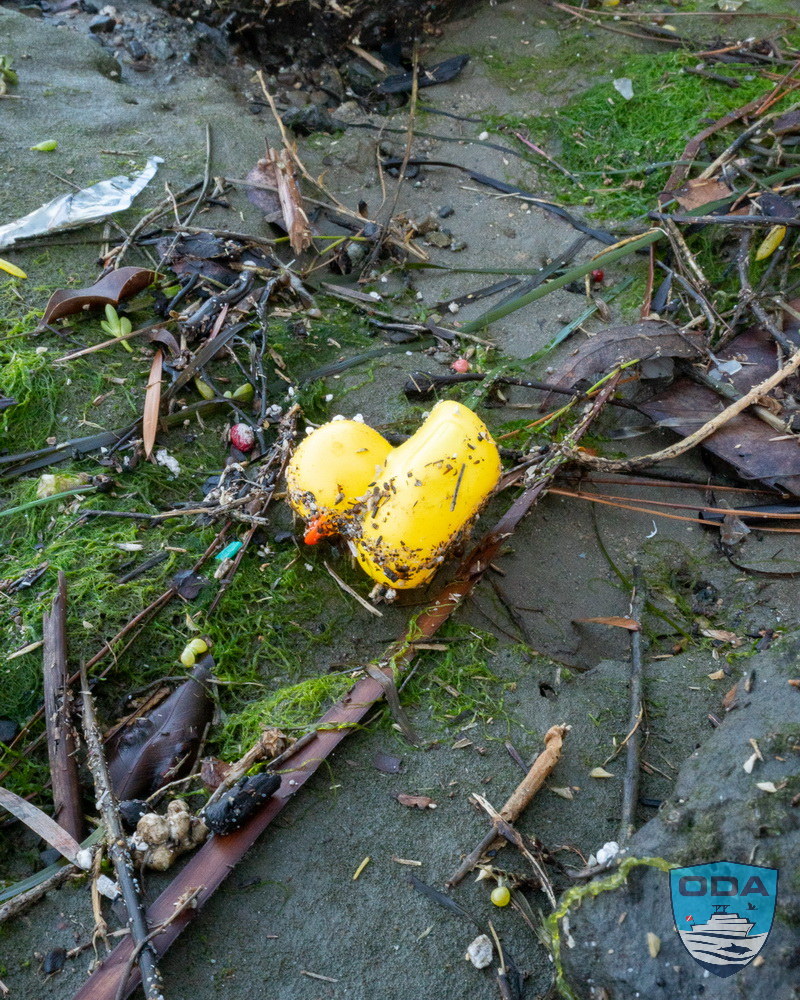 And ironically, there was even a plastic bird...
And ironically, there was even a plastic bird...
As I was taking these pictures of them, I was also seeing plastic bags and Styrofoam (polystyrene) floating in the water right alongside them. As the Styrofoam starts breaking apart the smaller pieces look just like fish eggs to the birds and they eat it.
Knowing all the harm it does to wildlife just made me sick to my stomach and made us all more determined than ever to remove as much as we could in the short time we were there.
Less Trash Will Go to Sea
As you can see, we made quite a difference. Here are the before and after pictures. We'll be back to get any stray items...
Having 10 people show up for a cleanup is a good thing, but it’s NOT going to SOLVE this problem. We, as a society, need to do what we can individually by reducing our use of plastics, but we need to put political pressure on our government to enact laws that demand that the companies that produce this stuff get fined if their products are polluting the environment.
In December of 2022, Los Angeles and San Diego voted to ban polystyrene that’s used for disposable cups, plates and food containers, set to go into effect in April of 2023. Other major cities in California have already adopted a phase-out approach, with San Francisco, San Jose, and Oakland joining the polystyrene-refrainers.
Governor Newsome signed into law the “Plastic Pollution Producer Responsibility Act,” which requires a 25% reduction in the use of single-use plastic packaging within the next 10 years. The law also mandates that 65% of the plastics be recycled. Currently only 9% gets recycled, despite all the labeling on the items that tell us the product is recyclable.
Bans work
I can remember a short time ago when there was a huge push to ban plastic straws. There was a small but vociferous crowd of people screaming that it was Big Brother sticking its nose where it didn’t belong. Well, regardless, the ban went into effect. The results were almost immediate. In 2019, when cleaning up this exact same spot, we removed what looked like one thousand straws during a three-hour cleanup. On the cleanup we just did, I hardly saw any straws. I’d say a dozen at most.
Now with Styrofoam next up on the list, lets hope we see similar results.
Almost Half a Ton of Mostly Plastic Debris
Because individual pieces of plastic are so light, you can imagine it takes A LOT of accumulated plastic to weigh in at 1,000 pounds. Yes, you read that right: We removed almost half a ton of trash that was mostly plastic, filling 23 trash bags.
While we all felt good about removing over a thousand pounds of debris, the tide was rising, and we had to leave the rest behind for another day. We had covered about 200 of the 400 yards. We’re going to try to do this again in two weeks, so if you're interested in helping please reach out to us at volunteer@oceandefenders.org.
I want to thank everyone who gave up their Sunday afternoon to make this world a better place for our feathered and finned friends: Dave and Jean Merrill, Kent Morris, Hannah Nelson, Linda Nicholes, Pete Markel, and our new friends Evan Noh, Mr. Noh, and Justin.
Evan and Justin are 13 years old, and Mr. Noh drove them all the way down from the Pasadena area to help out as part of a school project they’re doing for one of their classes. Good job, guys, and bucketloads of thanks for your help!
It was a VERY productive day, but one I wish we didn’t have to keep repeating year after year after year…
Speaking of years, check out my retrospective on our 20th anniversary in 2022. I'm thankful we have so much successful ocean cleanup to report; none of it would be possible without our generous ODA donors and dedicated volunteers.


